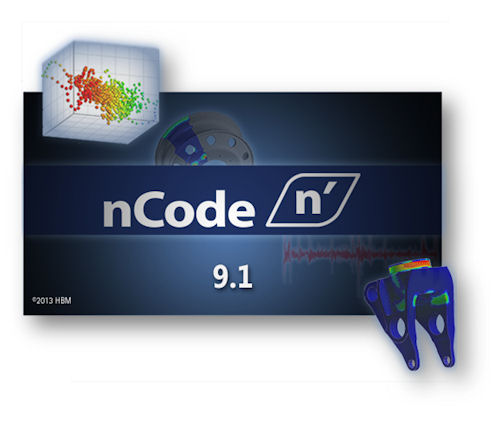Latest News
October 15, 2013
Almost all auto companies sell new cars with a powertrain warranty. I could have used a little warranty action when I was 20. It was about 2 a.m. in Yonkers, NY. I’m driving my ’68 Plymouth Fury up Roberts Ave. from the Nepperhan side. It’s narrow, snaky, and nearly straight up. I get to the bend at Dickinson and the bolt connecting the halves of the drive shaft snaps, clunking both halves to the pavement. Metal fatigue, pure, simple, and such a drag. I was lucky that there was no traffic, no great speed involved (I had exited the highway a minute earlier), and that I was too stupid to know how lucky I was.
 |
Fatigue and durability analysis are critical in so many applications that it seems a bit hack just to write that. Still, you cannot overstate the importance of the safety factor inherent in fatigue and durability analysis. HBM-nCode officially released version 9.1 of its nCode DesignLife software for fatigue and durability analyses the other day. Version 9.1 contains a Safety Factor product option that, when used early and often in the design process, can help you assess the durability of a range of components in ground vehicle powertrain engineering. Today’s Check it Out link points you to a complimentary webinar called “Powertrain and Safety Factor Analysis” that explains what the Safety Factor approach can mean to you. It’s quite interesting.
Background: DesignLife performs durability analyses using FE results, and it offers direct support of results data from such systems as Abaqus, ANSYS, Nastran, and RADIOSS. DesignLife identifies critical locations and calculates fatigue lives. The Safety Factor product option in DesignLife, according to HBM, expands DesignLife’s capabilities to cover many aspects of the durability assessment needed for engines, transmissions, and drivelines.
The Safety Factor product option is a stress-based factor of safety method commonly used for the design of crankshafts, camshafts, and pistons. It employs standard mean stress corrections or user-specified Haigh diagrams. It has other capabilities for powertrain modeling, including methods for stress gradient effects for fatigue analysis of cast materials used in engine blocks, virtual shaker testing simulation for engine electronics, and thermo-mechanical fatigue analysis for high-temperature components like turbochargers.
Today’s 43-minute presentation begins with a succinct run through of fatigue and durability analysis as well as an overview of the Safety Factor product option. It then turns to demonstrations of many of the features available in the DesignLife Safety Factor product option. Topics include factor of safety calculations for high cycle and low cycle fatigue; simulation of PSD (power spectral density) based electro-dynamic shaker table tests; automated compensation of notch sensitivity for fatigue calculations; and techniques for temperature-compensated and thermo-mechanical fatigue.
The presentation moves along briskly and is loaded with charts, tables, results, and screenshots. None of the dialog, images, or data shown is kid stuff, but even a greenhorn like me can follow it. HBM-nCode earns an A+ for its approach to the actual demos: They are tightly focused and get to the heart of what’s cool about the DesignLife Safety Factor product option right away without wasting your time on ancillary stuff as too many demos do. The demos of the virtual table shaker functionality and the notch sensitivity calculations during the latter third of the broadcast are particularly fascinating.
Fatigue life is one of the most important factors to consider when you design powertrain components. The loads they’re subject to are intense and variable, and the number of loading cycles is in the millions. If your duties take you into powertrain engineering, it’s a safe bet that “Powertrain and Safety Factor Analysis” is well worth the little bit of time it will take you to watch. Good stuff.
Thanks, Pal. – Lockwood
Anthony J. Lockwood
Editor at Large, Desktop Engineering
Subscribe to our FREE magazine, FREE email newsletters or both!
Latest News
About the Author
Anthony J. Lockwood is Digital Engineering’s founding editor. He is now retired. Contact him via [email protected].
Follow DE





